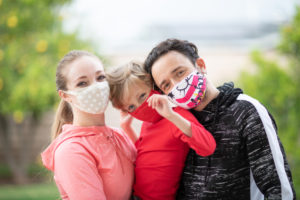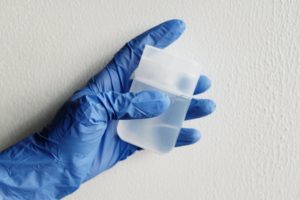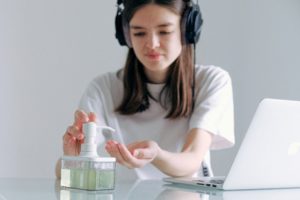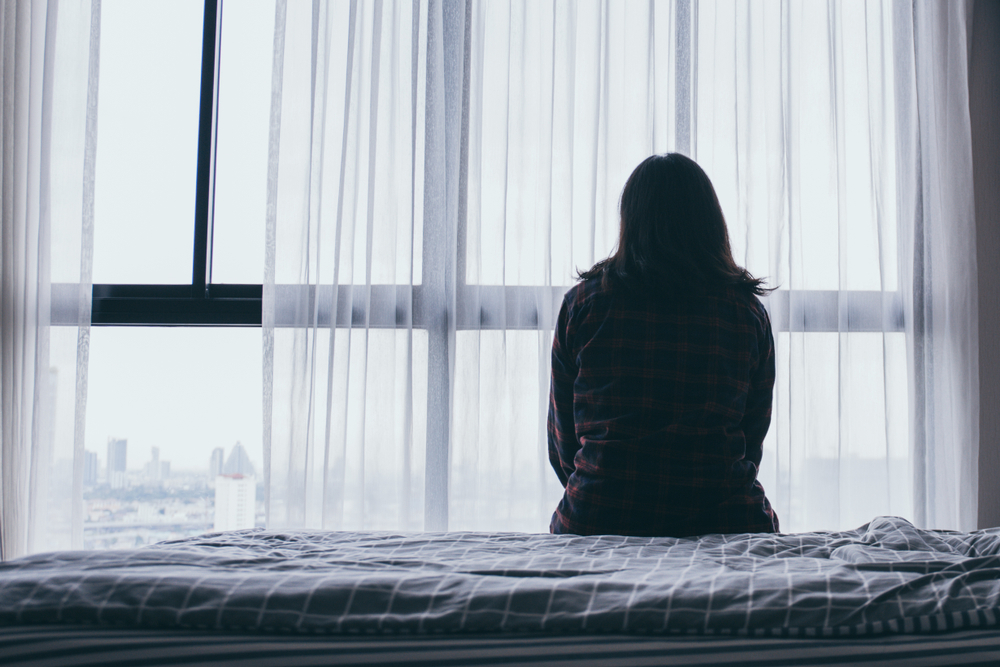From June 15 it will be mandatory to wear face coverings on public transport in England. As the lockdown eases, shops begin to reopen and many people prepare for a return to work or school, the time has come to think about our own personal protective equipment (PPE). But what do you really need?
Face coverings

Does wearing a facemask prevent you from getting the coronavirus? In short, no.
But after previously dismissing their effectiveness in the fight against the virus, the Government has changed tack.
Face coverings, which can be homemade, must be worn on buses, trams, trains, coaches, aircraft and ferries. Passengers will not be allowed to travel without one, and if they do not wear one they could be fined.
An analysis of 31 studies found a face covering may only be very slightly protective against viral infection. That being said, they offer better protection if both infected and uninfected individuals are wearing the mask. Therefore, if more people are wearing them, the more effective they will be.
Another factor is the composition of the covering. Medical masks provide superior protection to cloth. The moisture retention and poor filtration qualities of cloth may even result in increased risk of infection. A study found particle penetration of cloth masks was 97% compared to just 44% in medical masks.
However, the public is encouraged to avoid buying medical grade masks to ensure a sufficient supply for frontline workers.
Instead, we have been urged to get creative and make our own coverings. Professionals have stressed the importance of ensuring any mask fits well around your nose, mouth and chin, creating a seal. Recent work has been focussed on determining the best material to use for fabric masks. One report has found a mixture of tightly woven cotton and chiffon made from polyester or spandex filters out 80-99% of small particles, making it an ideal combination for a homemade face covering.
Gloves

Government guidance recommends facemask wearers wash their hands before putting their mask on and taking it off. Hopefully we have all come to understand the role our hands play in spreading diseases and the necessity of adequate washing.
If hand hygiene is an important aspect of proper mask use, would it be sensible to wear gloves? Professor of human health John Cherrie has said that wearing gloves discourages people from touching their face. This supports the idea that wearing gloves should minimise your risk of contracting the virus. On the other hand, misuse of gloves can make them irrelevant and may even increase your risk of infection.
Germs transferred on to gloves can easily be passed on if gloves are not removed and disposed of properly, or if they are used to touch your face or mask. The Centers for Disease Control and Prevention (CDC) has stated that gloves are not necessary unless used for cleaning or caring for someone who is unwell. Instead they stress the best way to keep yourself safe is to frequently wash your hands and maintain social distance.
If you want or need to use gloves, the World Health Organisation (WHO) has issued a glove use information leaflet.
Hand sanitiser

Alcohol-based sanitisers containing at least 60% ethanol or 70% isopropyl alcohol kill pathogens by damaging microbial proteins and inactivating viruses. Sanitisers of this strength may not, however, be as effective as washing your hands. Some users do not use a large enough volume of gel or may wipe it off before it has dried. Also, if hands are visually dirty or greasy, sanitisers will be unable to penetrate to the skin as soap can.
Although hand sanitiser is not an adequate replacement for hand washing, its ease and speed of use mean it is more likely to be used regularly. Sanitising gels, foams and wipes have all been shown to significantly reduce viral counts on hands.
Therefore, it is worth investing in some hand sanitiser for times when you are out and can’t reach a sink. Look for sanitisers that do not contain methanol (a highly toxic additive) and have an alcohol content about 60%.
Sally Bloomfield, a professor at the London School of Hygiene and Tropical Medicine, advises that hand gel be used on leaving and returning to your ‘safe place’, i.e. your home or desk, and when you come into contact with new things.
And don’t forget social distancing
There is much to think about when it comes to returning to work, including what kind of PPE you need. Even those attending property viewings, visiting relatives or just doing a food shop may be deliberating whether to invest in a mask and gloves.
And we are reminded to always maintain social distancing and avoid touching our face in order to minimise the risk of infection.
This continues to be a tough time for very many people. If you’re in need there’s lots of great advice available from the organisations on our help list.
I WILL BE ETERNALLY GRATEFUL. AMANDA MAKES YOU FEEL LIKE YOU ARE HER ONLY CLIENT AND HOLDS YOUR HAND TO GUIDE YOU THROUGH














